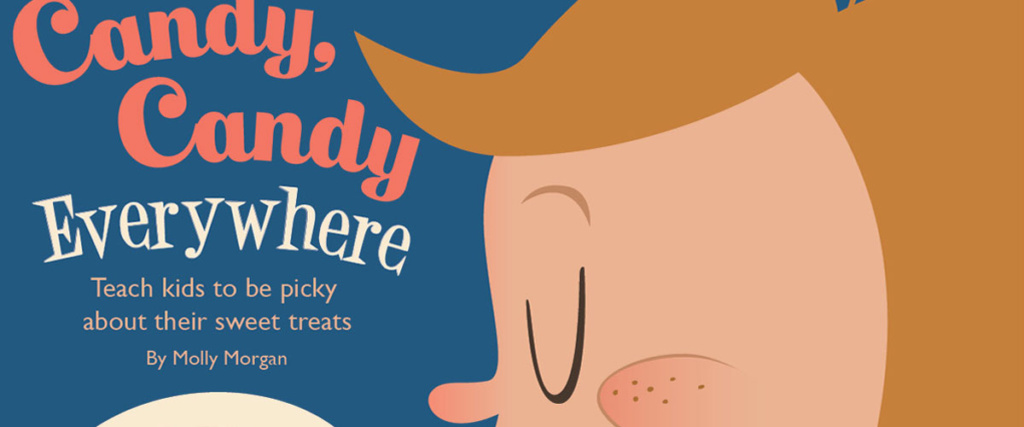Starting now, it’s candy season. But while a lot of candy is consumed on and around the time of Halloween, actually, Halloween day only accounts for about 4 percent of candy consumption in the United States.
As a mom and a registered dietitian, I truly don’t have a problem with the occasional candy bar, soda or sweet. From my perspective the primary issue is the overabundance, accessibility and availability of candy and sweets.
If you are a parent, you can relate: At the doctor’s office, there is the lollipop for after shots; at the bank there is a lollipop just because; at the gas station, drug store and grocery store, there is candy right at eye level to grab your attention. There is now candy for every holiday, at the office there are candy dishes, at the dry cleaner there are mint or candy dishes, and then there is candy for the winter holidays, Valentine’s Day, and the list goes on.
There is very interesting research done by Brian Wansink at the Cornell University Food and Brand Lab around how visibility and convenience influence candy consumption. The researchers found that when secretaries were given a dish of chocolates to have on their desk, they consumed 48 percent more candy compared with when the candy was out of reach. Also fascinating is that even though they did eat less candy when it was out of reach, the group also estimated they had even less than they did.
That means that getting the candy and sweets out of sight and in an inconvenient place could help you consume less. Yet it is still important to be mindful of what you are eating, because research shows that you could still be consuming more than you thought you were.
On Halloween last year, at my house, we did not pass out coins or apples. Instead we had a mix of full-size candy bars, fun flavors of gum, and a basket of non-candy items for little ones or those with allergies. Why? I would rather have someone have an occasional full-size candy bar (about 250 calories) and feel satisfied than have an endless stash of tiny candy bars or a candy dish.
The problem is that each little candy bar has about 40 calories, and those mindless calories can quickly pile up a hundred or more extra calories per day! While just 100 extra calories per day doesn’t seem like a big deal, having an extra 100 calories per day for a year results in a total of 36,500 calories per year, which can potentially lead to 10.4 pounds of body weight.
Appealing sugar also comes in the form of sugary drinks. Do you wonder which is worse? The good news is that many candy bars have less sugar compared with sugary soda. For example, candy bars and sugary candies have 30 to 40 grams of sugar per serving, compared with the nearly 70 grams of sugar in a 20-ounce bottle of soda. Certainly the sugar content of a candy bar keeps it out of health food status but generally, it’s a lower-sugar choice compared with soda.
But back to the candy! Here are some practical ways to deal with the upcoming months’ influx of candy.
First and foremost, be mindful of what you are consuming and help your children to be mindful, too! Again, it isn’t that you can’t have candy but you need to know how much you had and the calories and sugar that come with it.
If you do keep candy in the house, keep it out of sight and in an inconvenient place. As a mother of a little guy with a wicked sweet tooth, I can say that keeping the candy in a cupboard that we rarely open helps keep candy intake in check.
Make sure to talk to your kids and explain that while candy tastes great, it doesn’t give our bodies the best fuel. So we can have it sometimes but not all the time. This kind of conversation can help teach kids to start to pass up candy sometimes, especially since it is offered in so many places.
And if you’ve got an abundance of candy in the house, use some to bake with! Make cookies for a special occasion with chopped-up candy bars from holidays; it’s a fun way to use up candy. Then freeze some of the cookies to pull out of the fridge at a later date.
Balance out Halloween and other parties with plenty of healthier choices for everyone including: drinks such as seltzer water, plain water or milk; and snacks like fruit and veggie platters, mini-whole-grain English muffin pizzas, celery with peanut butter, or whole-grain crackers and cheese.





